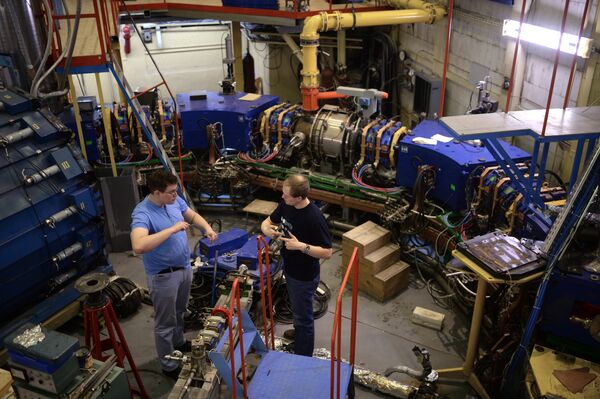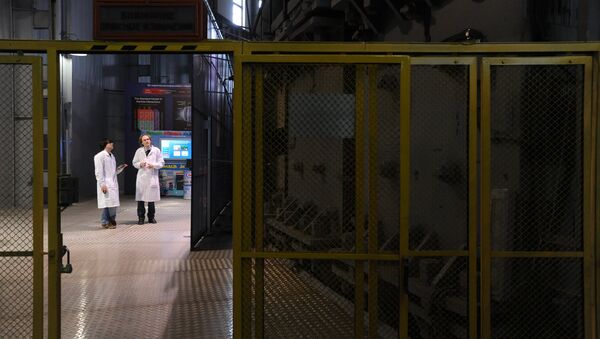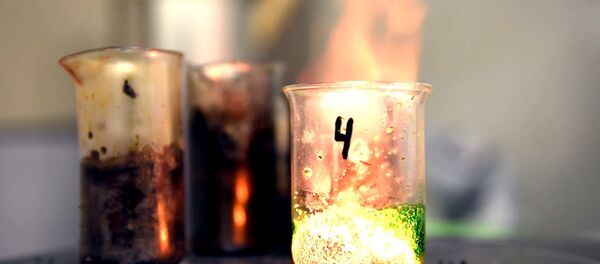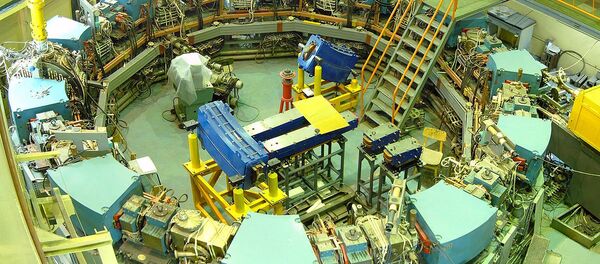Budker Institute of Nuclear Physics Deputy Director Yevgeny Levichev discussed Russian physicists' ambitious plans with Russia's RIA Novosti news agency on Tuesday.
The Institute plans to create the Super Tau Charm Factory, a particle accelerator which would study the collision of beams of electrons (matter) and positrons (antimatter) in an effort to help to identify phenomena and processes beyond the Standard Model of particle physics.
The physicist explained that during their work on the Dubna project, he and his fellow scientists have discussed the prospects of uniting the efforts of all of Russia's physics institutes to help implement these kinds of projects. "I hope that by uniting, we will have a greater capability to push projects through," Levichev noted.
Physicists at the Budker Institute of Nuclear Physics are working on the so-called Super Tau Charm Factory, a particle accelerator and collider that would study the collision of beams of electrons and positrons in the hopes of identifying and classifying phenomena and processes which are beyond the Standard Model of particle physics.

So far, Levichev explained, the government has not allocated funding for the project, whose hefty price tag is estimated at roughly 27 billion rubles (about $446 million US). Still, that hasn't halted development work. Physicists are using all possible means of financing, including a grant from the Russian Scientific Foundation, in order to lay the groundwork for the collider's eventual construction.
For his part, Budker Institute of Nuclear Physics director Pavel Logachev told RIA Novosti that his Siberian institute has been very actively involved in the Dubna project, adding that he hopes physicists from Dubna and other Russian regions will be just as active in work on the Siberian collider.
"We're not talking about a formal merger," Logachev stressed. Instead, he noted, work on the Dubna project will hopefully show that physicists, engineers and designers from across the country can work together in an effective, efficient manner. That "will be a serious basis for the government to continue work in this direction," he added, referring to the need for additional funding.
At present and for the foreseeable future, there is no other collider facility anywhere in the world with the capacity to conduct the kinds of research that the Super Tau Charm Factory would be capable of. The facility would allow for the discovery of fundamentally new information about the structure of elementary particles. According to RIA Novosti, this would allow Russia to take the lead in this very promising niche on the cutting edge of world science.
Russia has a total of six so-called mega-science projects in the works, each at various stages of development. In addition to the Budker and Dubna-based projects, others include an experimental nuclear reactor complex at the Kurchatov Institute, a special-purpose synchrotron radiation source, also at the Kurchatov Institute, an exawatt center for extreme light studies in Nizniy Novgorod, and the IGNITOR fusion project, again at the Kurchatov Institute.





